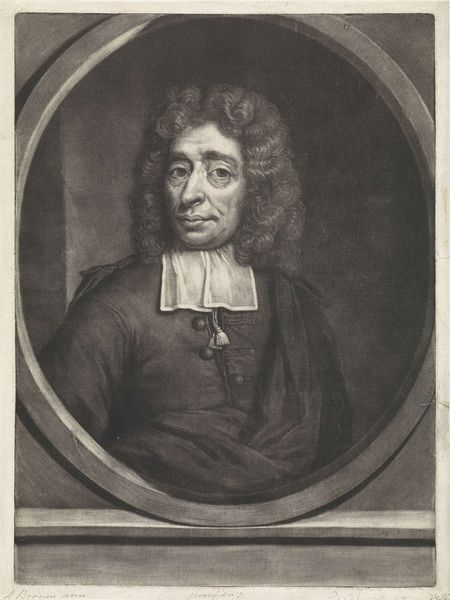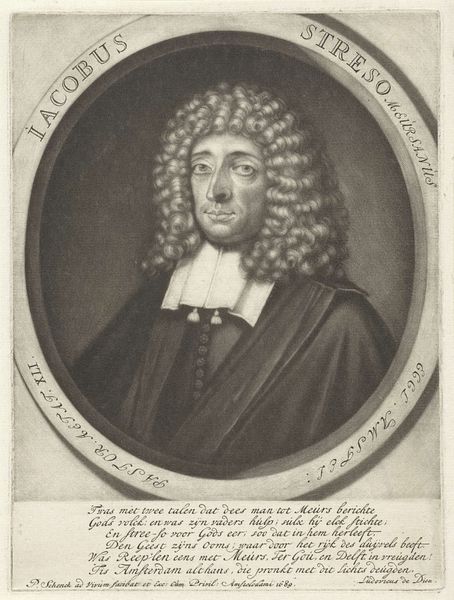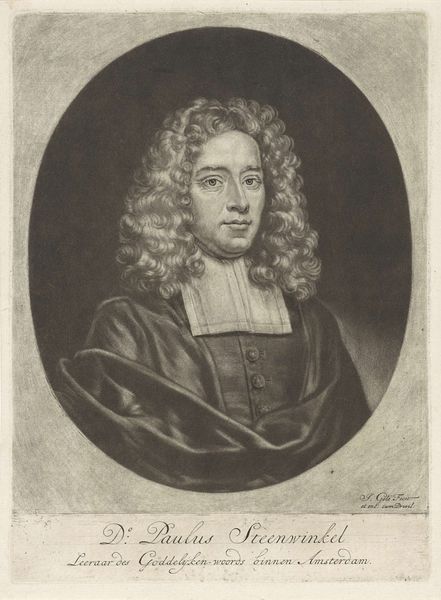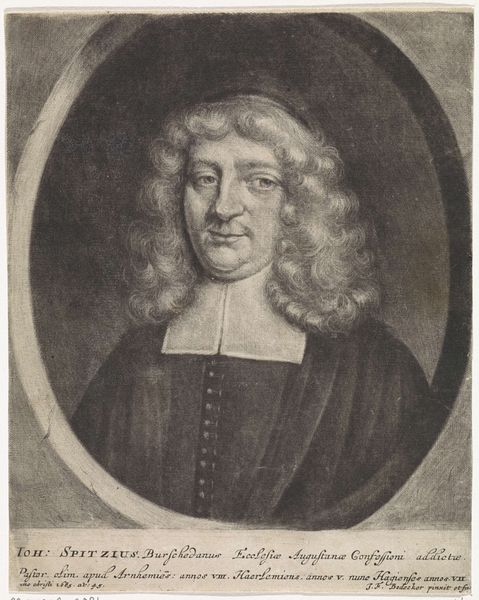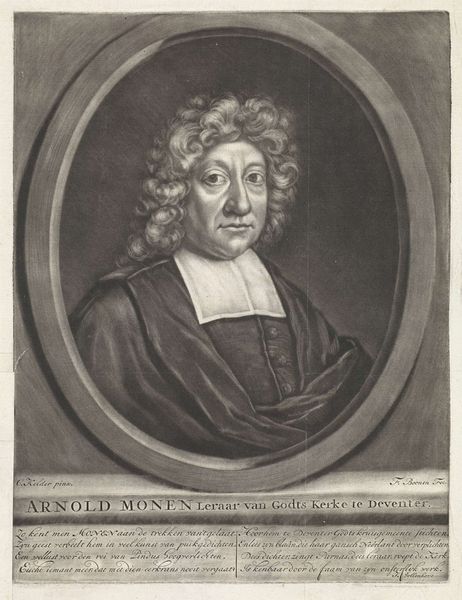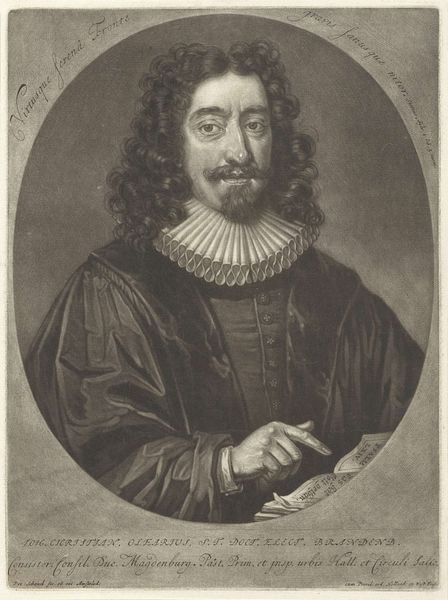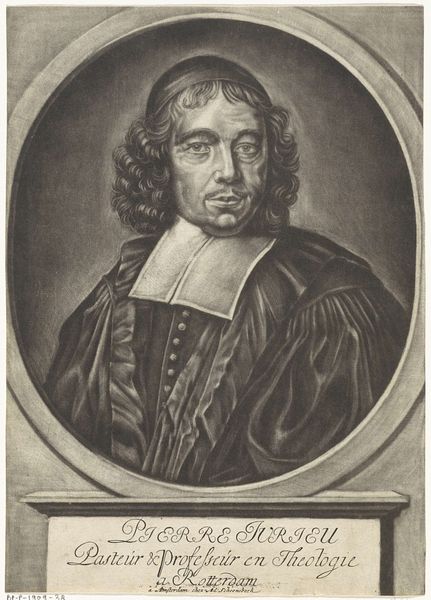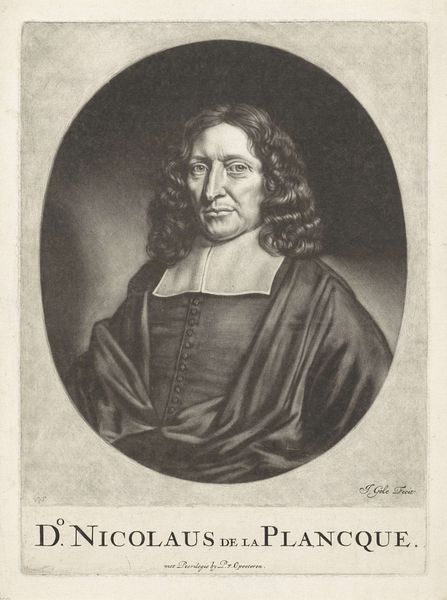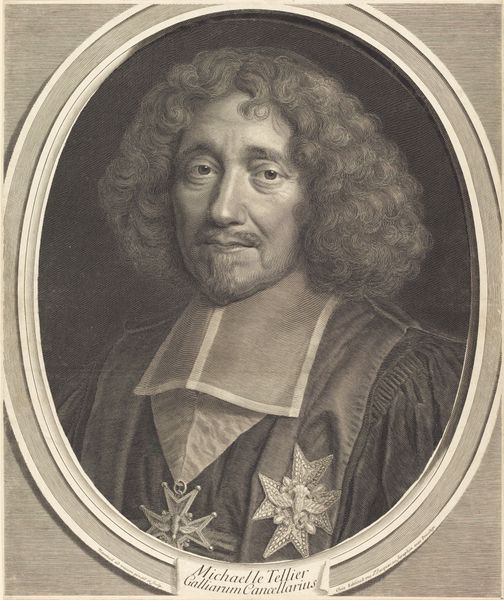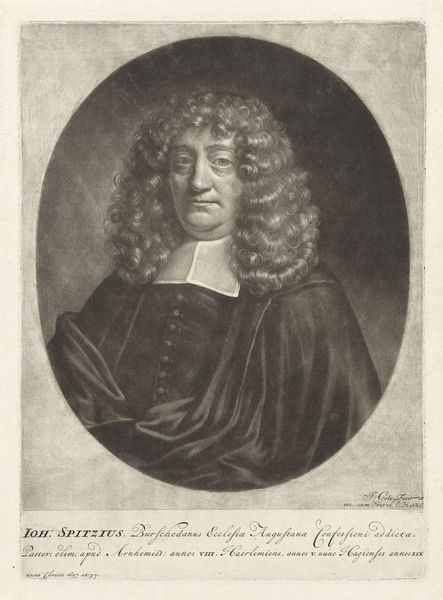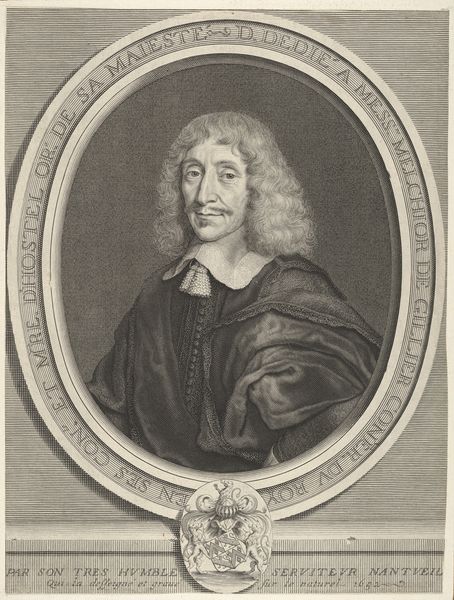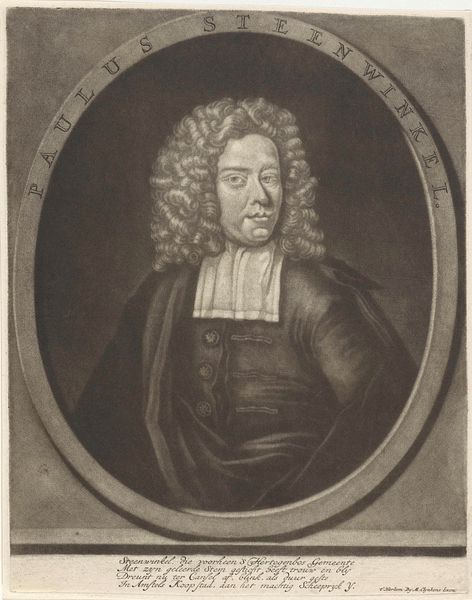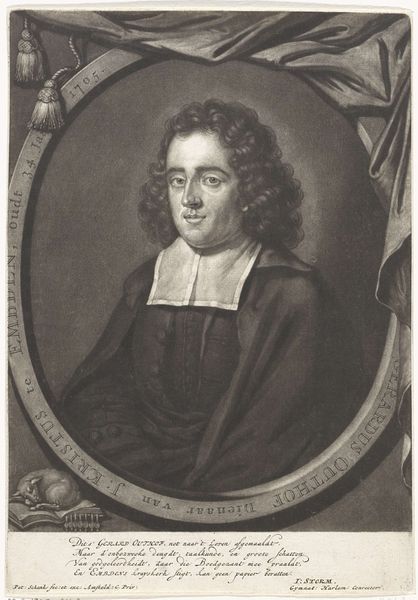
ink, engraving
#
portrait
#
baroque
#
dutch-golden-age
#
charcoal drawing
#
ink
#
portrait drawing
#
engraving
#
fine art portrait
Dimensions: height 286 mm, width 213 mm
Copyright: Rijks Museum: Open Domain
Curator: Here we have Pieter Schenk’s *Portret van Jacobus Streso*, an engraving dating sometime between 1670 and 1713. It’s currently held in the Rijksmuseum. Editor: It immediately strikes me as somewhat austere. The oval framing, combined with the subject's serious expression and dark coat, creates a very formal and contained image. Curator: Indeed. The Baroque elements are undeniable, notably in the subject’s elaborate wig. Let's consider Schenk's process, creating this image through engraving; can you imagine the precision and skill required to render such intricate details with burin and ink? Editor: Absolutely. It’s important to note that prints such as this had very practical applications. They were multiples, produced and disseminated widely, making them tools of promotion and vehicles for commerce. How fascinating to see labor replicated so artfully. Curator: I agree that the mechanics of its production are important. But focusing solely on replication ignores the masterful use of line and shadow. Look how Schenk uses hatching and cross-hatching to create a sense of depth and volume. The contrast is so delicate! It suggests a psychological depth as well. Editor: I concede that Schenk’s handling of light and shadow is sophisticated. However, the purpose-built nature of such works cannot be overlooked. These portraits were often commissioned, tools for forging relationships, or elevating status through broad distribution. Jacobus Streso likely wished to solidify his public image, and this piece was integral to that process. Curator: Perhaps so. Yet, focusing solely on its functional aspect discounts the artistic skill involved in creating a composition that resonates even centuries later. Look at the balanced arrangement of the figure within the oval, the way his gaze engages the viewer. This is about form, too. Editor: Certainly, there is an aesthetic achievement. And to your point, despite the constraints, Schenk has indeed produced an arresting image. Its endurance speaks to both its artistic merit and its effective execution as a reproduced image in Dutch society. Curator: Agreed. By observing this artwork's structural choices, while understanding its modes of production, it brings forth multiple meanings. Editor: A richer context certainly allows a fuller consideration. Let's leave it there for our audience.
Comments
No comments
Be the first to comment and join the conversation on the ultimate creative platform.
